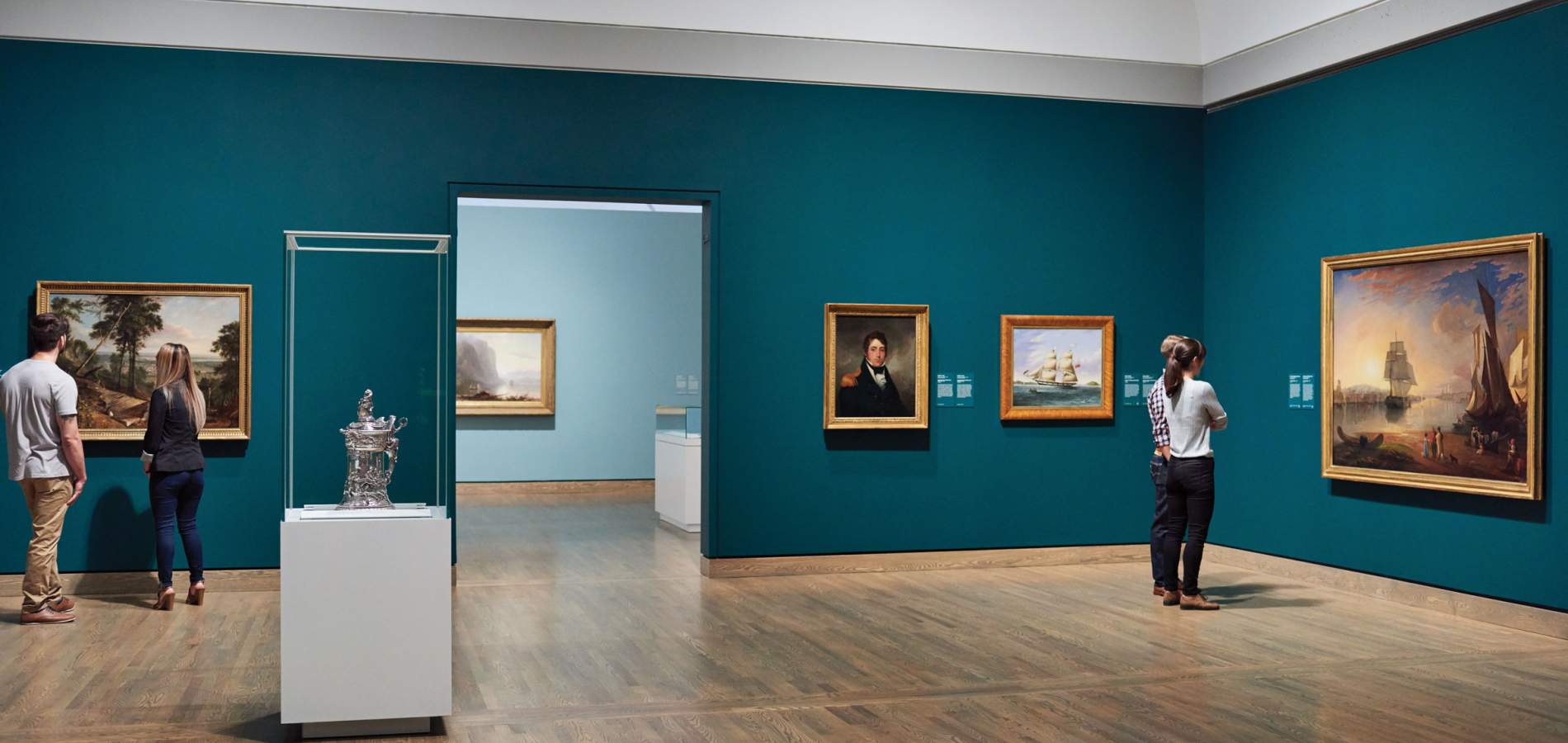By Natasha McKenty
Parliament Hill, cruising or skating on the Rideau Canal and seven national museums - Canada’s capital offers unlimited entertainment and enlightenment. A must-see museum to visit in Ottawa is the National Gallery of Canada (NGC), which resides on Sussex Drive at St. Patrick Street, in a large glass and granite building.
The current Director and CEO is Dr. Sasha Suda, the youngest person ever to assume this NGC title. She describes the role as a tremendous responsibility and considers it a symbol of “Canada’s changing face.” “It’s an indication that we as a society are looking for new ways to change and evolve big cultural institutions that have a lot of authority within the cultural landscape,” she said.
The National Gallery houses an extensive collection of Canadian and Indigenous art, helping to place it among the world’s most respected art institutions. The museum’s galleries highlight artists such as James Wilson Morrice, Tom Thomson, the Group of Seven, Emily Carr, Paul-Emile Borduas, Alex Colville, and Norval Morrisseau. In 2017, the Canadian and Indigenous Galleries were opened to critical acclaim. An objective of the 2017 redesign was to create greater inclusion and diversity. An Indigenous advisory committee provided guidance in representing Indigenous art, including adding Indigenous languages.
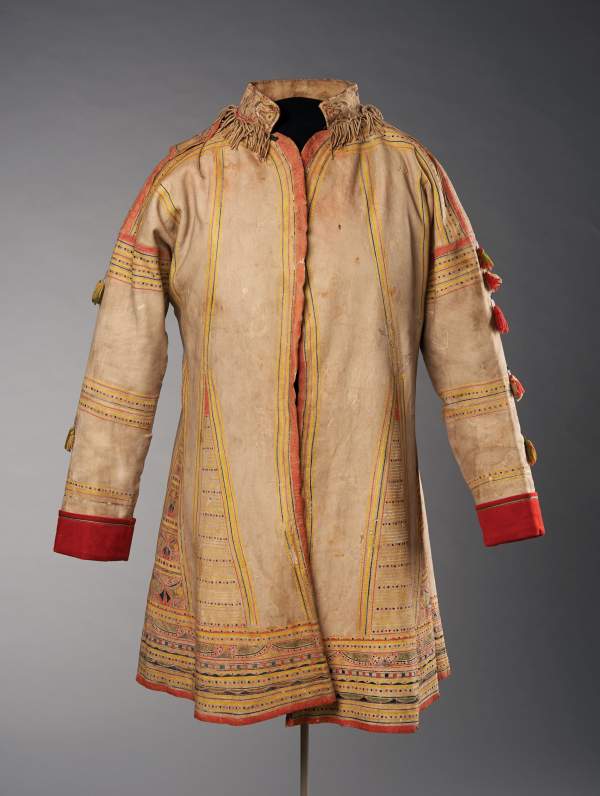
Unknown (Naskapi Artist)
Hunting Coat,
c. 1840 Caribou hide, paint, thread, wool and glass beads, overall measurements on mannequin: 95 x 80 x 50 cm
National Gallery of Canada, Ottawa
Photo: NGC
--------------------------------
Alexandra Kahsenni: io Nahwegahbow, the Associate Curator of Historical Indigenous Art, joined me for a virtual interview along with the Acting Senior Curator of Canadian Art, Adam Welch. Nahwegahbow and Welch share their passion for their perspective collections, converging on a commonality; a commitment to sharing female artists’ work, often overlooked in history.
“We thought, how can we more prominently feature work by women?” said Welch. Today, a third of the works in the Canadian and Indigenous galleries were made by women artist, broadening the scope of what is defined as art to include basket weaving and textiles, and allowing for the presence of meaningful works created by Indigenous people. “It also bears remembering that these are collection galleries. We’ve been building the Canadian collection since our founding in 1880, so we have a lot of historical systemic sexism that was built into the collection.”
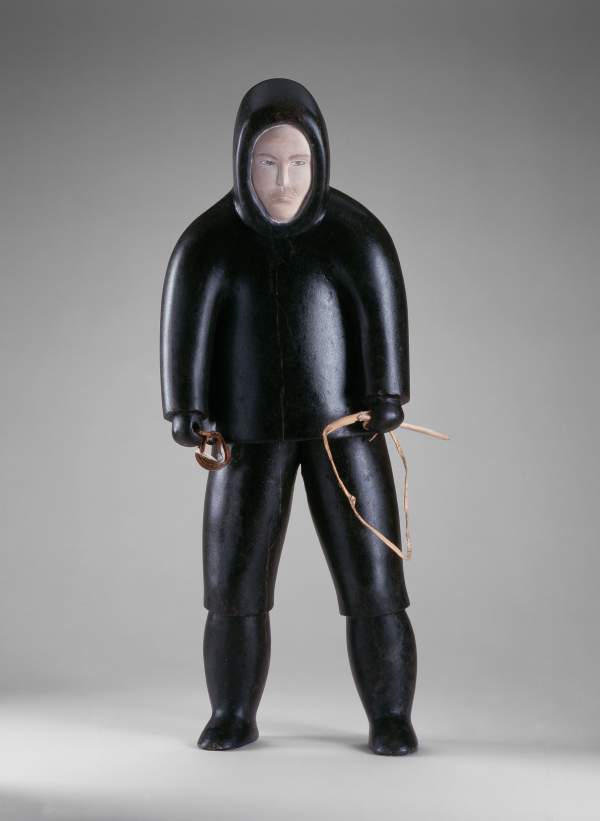
Thomasie Qamugaaluk
Hunter,
c. 1955 Black and white stones, ivory and sealskin, 53.2 x 20.2 x 15 cm
National Gallery of Canada, Ottawa
Gift of the Drache Family, Ottawa, 1997
© Estate of Thomasie Qamugaaluk
Photo: NGC
--------------------------------
Nahwegahbow adds, “We just hope people walk away having rethought something about Canadian art, maybe learned new things, especially from the Indigenous perspective.” We don’t often realize that Indigenous women were creating works of art at the same time as the Group of Seven. “We hope that people feel encouraged and empowered to rethink the standard narrative of Canadian art. Our aim is to broaden the scope to tell a more robust and truthful history of art made on this land that is now called Canada,” she said.
I ask how important these narratives are, and we talk about how Indigenous presence can often be “…rendered invisible. Thankfully, that’s changing now in history books. As an Indigenous person, when you see yourself represented in those (gallery) spaces, it makes a big difference because you begin to build an empowered self-awareness,” Nahwegahbow said. “My people created these beautiful things from what they found on the land. They were created during some of what must have seemed like apocalyptic times during the culture ban. It’s really important that Indigenous peoples go into that space and see themselves and feel empowered.”
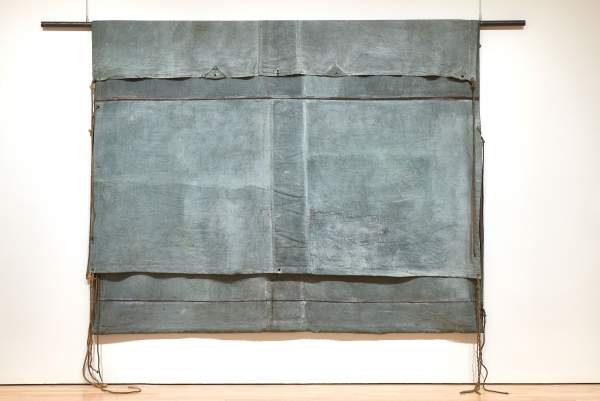
Betty Goodwin
Tarpaulin No. 3,
1975 Gesso, pastel, chalk, and charcoal on canvas with metal grommets and rope, 231 x 293.5 cm
National Gallery of Canada, Ottawa
© Gaétan Charbonneau / Estate Betty Goodwin
Photo: NGC
--------------------------------
“We’re very fortunate,” added Welch, “that we have an amazing restoration and conservation laboratory, a group of over 15 conservators who specialize in the preservation or restoration of works of art.”
“We have some very old pieces that are on loan to us from different institutions. Some of these pieces are archaeological, and they’re viewed as being elder or ancestral objects, so they’re considered to be alive by the communities that they come from and require cultural care,” said Nahwegahbow. Protocols include smudging before touching an object and other community-determined considerations. “It’s a big part of their job that I’m really grateful for,” she adds. “I think our conservators are these superhumans. They’re art experts and scientists. The remarkable thing about going into the conservation lab is that sometimes you get to see how something was made.”
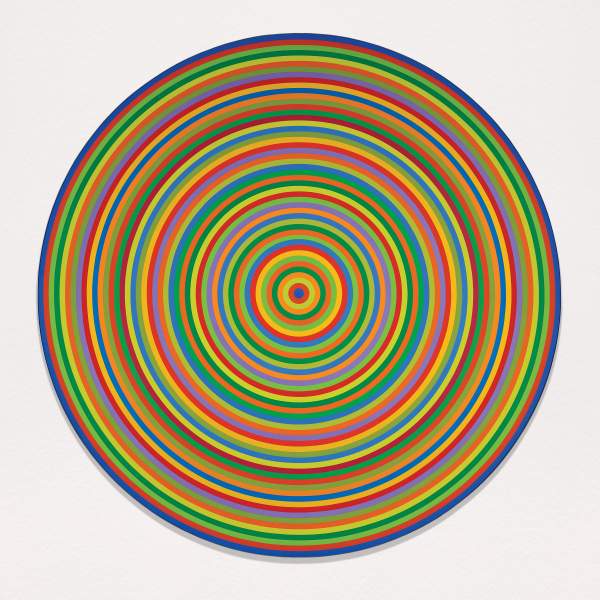
Claude Tousignant
Chromatic Accelerator,
1967 Acrylic on canvas, 244.7 cm
National Gallery of Canada, Ottawa
© Claude Tousignant
Photo: NGC
--------------------------------
The Canadian and Indigenous Galleries are just some of the outstanding collections on display at the National Gallery of Canada. Spend a few hours or a day wandering the galleries on your own or participate in a guided tour. Dining options provide inspiring views of the surrounding area and the boutique gift shop offers a variety of merchandise and unique gifts inspired by the NGC’s collection. New exhibitions make revisiting the gallery a rewarding experience. Visit gallery.ca to participate in a virtual tour of the museum and to learn more about current and upcoming exhibitions. ✈
